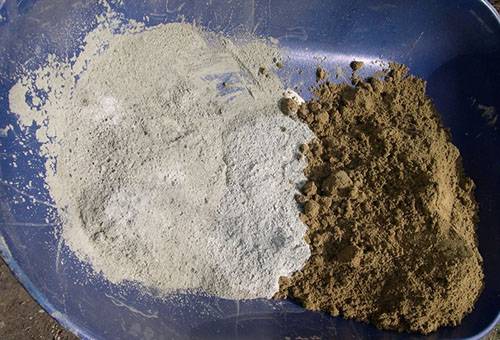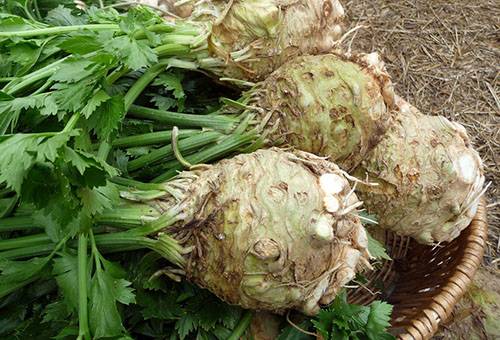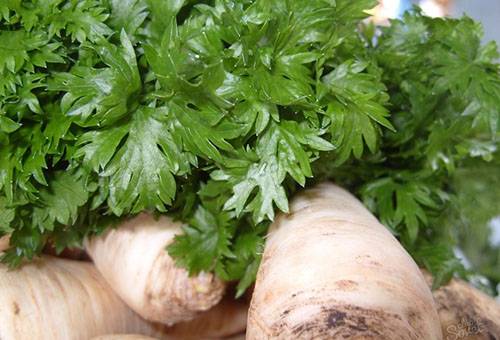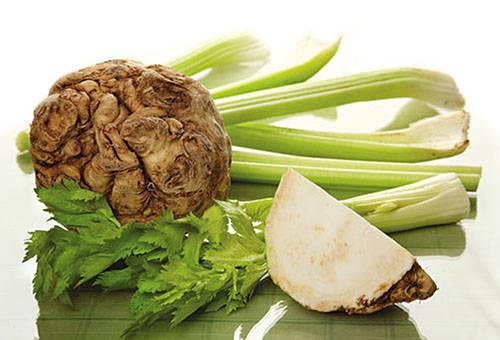What is the best time to harvest and where to store root celery in winter?
Content:
Do you know what a spring vitamin deficiency is? So, in the kitchen there are no healthy products, and you do not know how to harvest and store root celery and other vegetables. Use our tips and your dishes will delight the whole family with an unusual spicy taste. You need to take care of the blanks in the summer. Do not tear leaves from the selected specimens on the greens so that all the nutrients are completely transferred to the underground part. For salads, it is better to grow a leaf or petiole look, and save root crops for the winter.
Timely Harvest
Do not rush to remove the rhizomes from the beds: when they sit for a long time in the ground, they become more mature and large. In addition, with prolonged cultivation, the surface skin acquires the necessary hardness and can protect the juicy pulp from damage during harvesting, transportation and storage. The main thing is not to miss the first frost, otherwise celery will be poorly stored. In the middle lane, the harvesting time is around the end of September, and the weather forecast will help to choose more accurate dates.
About a month before harvesting, cut off the lower leaves and shoots, they have already fulfilled their function, now the root crop will ripen on its own. In order not to damage the peel, try not to dig the underground part with a shovel. It’s better not to use any tools, but simply pull the plant out of the tops. Check the quality of celery: when the top is soft, the tuber begins to rot. Tap on the rhizome, with a ringing sound you can be sure that there are voids inside.
Trim the leaves, leaving small stumps, remove the thin roots and clean the celery from the adhering earth. Sort all instances. When there are a lot of root crops, several pieces can be left in the garden. The underground part will not be suitable for food, but in early spring the plants will give you fresh leaves for salad. If you want to feast on this greenery in the winter, put the rhizomes in flower pots and grow on the window.
Storage of root crops in a city apartment
Celery is not capricious, it is well stored until the summer, but still requires attention. Underground parts can be kept in the refrigerator. Since there are different products, many of which are not subjected to heat treatment, unsanitary conditions are unacceptable. It is necessary to thoroughly rinse and dry the root crops and pack them in plastic bags. Place the tubers in the vegetable compartment, they can be used fresh for salads and added to hot dishes.
Of course, there is enough space in the refrigerator for a small number of roots, and if you want to eat celery all winter, you need to use other storage methods. When the container for vegetables is very small, you have to bring small portions of root vegetables from the cellar. Before you put them in the refrigerator, cover each copy with cling film, in this form it remains fresh and juicy for up to 10 days.
If the house has a large freezer, do not load the entire crop into it. When celery tubers are stored at sub-zero temperatures, they are unsuitable for eating raw. In the freezer, place only root vegetables, which will be the raw material for soups and vegetable stews.

Sand and lime will help preserve celery and avoid the risk of root rot
Wintering celery in the cellar, garage, in the country
There are many ways to store fresh celery tubers.Choose any of them, but remember: a good result is obtained only when the room temperature is from 0 ° to + 1 °, and humidity is 90% or higher. Our great-grandmothers also knew how to organize the wintering of root crops in non-residential buildings, and these methods have not changed much. Take advantage of the wisdom of the old tips.
- Pour a layer of wet sand into a large drawer and "plant" celery there, as if in a garden.
- Dip the root vegetables in a “clatter” of clay and water, dry and store in stacks.
- In the southern regions, where the earth does not freeze to great depths, lay the tubers in trenches, pouring each layer with wet sand. Top vegetables with straw and a layer of soil of 15 cm.
Tip
For fresh consumption, select only the largest, even, healthy specimens. Those root crops that cause even the slightest suspicion, ruthlessly reject. They will not disappear if you immediately put them into processing and store them in frozen or dried form.
Use some more little tricks to better preserve the crop. When in the sand, where root crops are stored, chalk, lime are added or the rows of celery are poured with husks from onions, the crop does not rot. Make sure that the sand does not dry out, for this you can cover the pile with a film, but do not seal the package. It will be nice to put vegetables in plastic bags or boxes lined with foil. This material retains carbon dioxide, which contributes to the good preservation of tubers. In any case, the top of the container must be open or have ventilation openings.
Non-waste technology
With good root crops you figured out, look what instances are left:
- small ones;
- ugly
- damaged;
- with voids;
- rotten.
Do not rush to throw them in a compost pile, respect your work. Good owners will do everything. When you collect the rejected tubers in a bag, put there and cut off the thin roots - they can also be used with benefit.
Peel the root crops, separate the rotten areas, cut the flesh into strips, and dry. In closed containers, such a product will be stored for a long time. Add it to soups: when boiled, celery will give the broth a spicy taste. You can grind the pieces in a coffee grinder and use the powder as seasoning. In the same way, cut roots can be used.
Another way: finely chopped peeled pulp or chop on a grater. Spread the resulting mass in bags and place in the freezer. To facilitate your subsequent work, divide the product into portions necessary for cooking. In winter, you just have to get a bag and, without defrosting, send the contents to the pan.
Summer is ending when the family ate fresh vegetables and greens with an appetite, but you want to keep a similar menu for the winter. There is nothing complicated: give celery root crops a little care, and they will be fresh, healthy and juicy until the summer. Before the new harvest, there will be dishes rich in vitamins on the table, and you won’t even remember about spring ailments.


